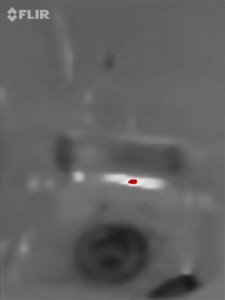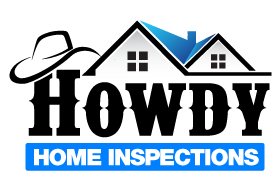Infrared Thermal Imaging is the new “hot” thing (pun intended) in the home inspection industry. Sadly, most people, heck even most inspectors, don’t know anything about thermal imaging or what an IR camera can do to better protect homeowners and potential homeowners. Home inspections are visual inspections. They are not technically exhaustive. Because of these limitations, sometimes things that are unseen can be missed. It’s unfortunate, but if something can’t be seen and there are no other signs of the problem, how could any visual inspection identify that problem? This is where a good home inspector is able to stand above his/her competition.
While home inspections are not technically exhaustive, a good inspector will have the equipment and knowledge to be able to identify many hidden deficiencies. This is where infrared thermal imaging cameras come into play. All materials have a unique thermal “fingerprint”. When heat, cold and moisture are introduced into the picture, the “fingerprint” for each material changes. An IR camera is able to detect these thermal anomalies even when they’re not visible with the naked eye.
If it’s not X-Ray Vision, how does it work?
Visible light is the part of the electromagnetic spectrum that can be detected by the human eye. The human eye can detect wavelengths af 400-700 nanometers. The wavelengths of Infrared energy start at about 700 nanometers, so they’re not visible by the human eye. In the world of Infrared energy, all matter with a temperature above absolute zero emits heat. This emitted heat is that objects’ unique thermal “fingerprint.” Ice, water, lasagna, cookies, grass, and even cockroaches emit infrared energy and each have their own “fingerprint” based on how much infrared energy they emit. Free beer to anyone who can identify the red object in this picture 🙂 
Infrared cameras take these heat fingerprints and produce images for us to see. For years this technology has been so expensive and complicated to use, it hasn’t been feasible for anyone other than large corporations with highly trained technicians. However, those times are over, and infrared thermal imaging is a tool that is redefining what’s possible in the home inspection industry.
How using an IR camera makes a Howdy Home Inspection ever better?
By using Infrared thermal imaging, I’m now able to go beyond my visual inspection and see things not visible to the naked eye.
Electrical panel and receptacles – I’m able to use thermal imaging to identify problems in an electrical panel box. I can see electrical anomalies that can be fire or electrical hazards. I can see if wires are “hot” from being overloaded or having poor connections. Wires that are carrying too much current can become overheated and start a fire. Infrared thermal imaging can identify these problems.
Plumbing Issues – Plumbing leaks that happen behind a wall can cause serious damage to a structure, as well as create unfavorable environmental conditions. By using my IR camera I’m able to scan around plumbing fixtures to identify any temperature differences that are suspect. Once we find temperature differences that aren’t what we would expect, I can use my moisture meter to investigate these issues further. IR cameras are unbelievable tools in the hands of an experienced inspector and Infrared technician.
Energy Inefficiencies – By using an IR camera, I’m able to identify areas where hot air is escaping and cold air is infiltrating a structure’s envelope. I often find entire walls and portions of a building where contractors failed to properly insulate. Once these areas have been identifies proper measures can be taken to correct the problem and make sure the area is no longer energy inefficient. A properly insulated house not only saves you money on energy bills, but it’s also better for the health of your structure.
Exterior Cladding Inspections – With the help of an infrared camera, I’m able to scan the exterior of your home and identify areas that may have moisture issues. EIFS (exterior Insulation finishing systems) was a type of synthetic stucco that had serious problems in the late 1980s because it didn’t provide a way for water penetrated the barrier to escape. As a result, any water than did get behind the stucco would get trapped behind the walls and rot the structure of the house. These issues are often visible using infrared thermal technologies.
Roofing Inspections – Using my infrared camera, I am able to inspect a roof and often identify the exact location where water is penetrating the roof covering. By using an IR scan and finding water leaks, homeowners can opt for a roof repair instead of a roof replacement. This can save a homeowner thousands of dollars.
Infrared Thermal Imaging makes Howdy Home Inspections even better!
All of these reasons are why Howdy Home Inspections uses Infrared Thermal Imaging. While IR scans don’t give me X-ray vision, it does allow me to determine what’s likely happening behind a wall based on the thermal “fingerprints” of the building materials. This doesn’t always guarantee that I’ll find an issue, but it is a great tool I can use to find things that I would never be able to identify during a visual inspection. This makes me that much more effective, and the more effective I am, the better protected my customers are. My customers hire me to do the best job I can and Infrared Thermal Imaging helps me do.
Be Happy and Be Kind,
T.J. Thorne

